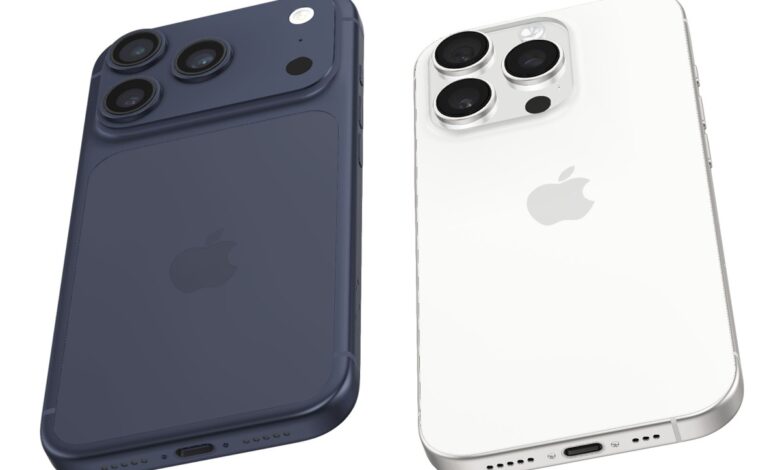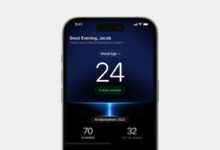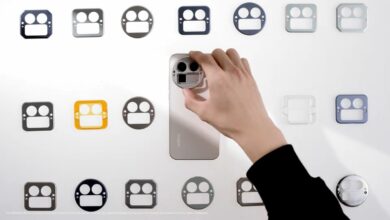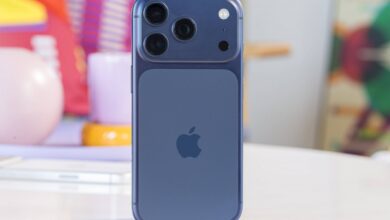iPhone 17 Pro Showdown: Is It Worth Upgrading From The 16?

Apple iPhone 17 Pro vs. iPhone 16 Pro: A Comparative Analysis
This article presents a comparative analysis of the Apple iPhone 17 Pro and its predecessor, the iPhone 16 Pro, evaluating key differences in design, performance, and features. The objective is to provide professionals and tech enthusiasts with an informed assessment to aid in purchasing decisions.
Design and Build
The iPhone 17 Pro introduces a redesigned chassis, substituting the titanium build of the iPhone 16 Pro with aluminum. While this unibody housing is intended to enhance heat dissipation, the overall weight has increased marginally. The 17 Pro exhibits a slightly thicker profile, although this is partially offset by a subtle curvature, contributing to a more compact feel. In contrast, the iPhone 16 Pro maintains a boxier design. Both models are IP68-rated for dust and water resistance, although the long-term durability of the 17 Pro’s anodized finish, particularly around the camera plateau, remains to be determined. The 17 Pro also features a revised color palette, offering a more striking Cosmic Orange and an understated blue, while the 16 Pro provides more subdued color options, including a black variant.
Display
The displays of the two generations are similar. However, the iPhone 17 Pro’s Ceramic Shield 2 offers improved scratch resistance compared to the first-generation Ceramic Shield of the 16 Pro. Both devices incorporate a 6.3-inch LTPO OLED display with an adaptive 120Hz refresh rate and Dolby Vision support. While theoretical brightness specifications differ, with the 17 Pro designed for 1,600 nits in HDR and 3,000 in some cases, versus the 16 Pro at 2,000 nits, testing reveals that the 17 Pro reaches a maximum of approximately 1,000 nits under standard test conditions compared to the 16 Pro at 1,800 nits. The 17 Pro benefits from lower reflectivity and enhanced scratch resistance.
Battery Life
The iPhone 17 Pro features a significantly larger battery capacity, with the physical SIM variant rated at 3,998mAh (nearly 12% more) and the eSIM-only variant reaching 4,252mAh (19% more). Testing indicates improvements in video playback and gaming performance.
Charging Speed
The iPhone 17 Pro incorporates a new charging standard, an AVS extension of the Power Delivery protocol, supported by a ’40W Dynamic Power Adapter with 60W Max’ (available in the USA). Testing with alternative Power Delivery chargers revealed enhanced top-up speeds compared to the 16 Pro. Fast wireless charging up to 25W via MagSafe and Qi2-compliant chargers is also supported.
Audio
The speaker systems on both iPhone Pro models utilize the standard configuration with a dedicated bottom-firing unit and an earpiece that combines to create a stereo pair. The 17 Pro has a slightly quieter setup, but a cleaner sound than that of the 16 Pro.
Performance
The iPhone 17 Pro is equipped with the Apple A19 Pro chipset, a 6-core CPU with a 2+4 core configuration, and an improved GPU. The 17 Pro features 12GB of RAM, compared to the 16 Pro’s 8GB, and both are available with up to 1TB of storage. The 17 Pro incorporates a vapor chamber cooling solution designed to improve heat dissipation.
Benchmark Performance
The iPhone 17 Pro demonstrates significant performance improvements over the 16 Pro across all benchmarks. CPU performance stability has also improved.
Camera Comparison
The iPhone 17 Pro incorporates camera system enhancements, including a new telephoto camera offering 4x zoom with a 48MP 1/2.55″ sensor and a new selfie camera. The main camera and ultrawide remain unchanged. The new selfie camera offers 18MP shots at 20mm and features orientation flexibility.
Image Quality
The main camera produces images with enhanced color and contrast compared to the 16 Pro, particularly at 1x magnification. The 17 Pro demonstrates an advantage in low-light video recording.
Video Quality
Both phones offer 4K video recording at 60, 30, or 24fps with all cameras. The primary camera can capture 4K at 120fps. The 17 Pro features Dolby Vision recording in all modes, while the 16 Pro can’t do it at 4K120. ProRes is available on both models, while the 17 Pro also features ProRes RAW and Apple Log 2. Daylight video quality is comparable between the two models, while the 17 Pro exhibits a noticeable enhancement in low-light conditions.
Conclusion
The iPhone 17 Pro presents notable advancements over the 16 Pro across several key areas, including design, charging speed, and performance. The camera system also delivers enhancements, particularly with the new telephoto and selfie cameras, and improvements in low-light video recording. The iPhone 16 Pro remains a viable option, particularly for those who prefer its design or who are seeking potential cost savings.






